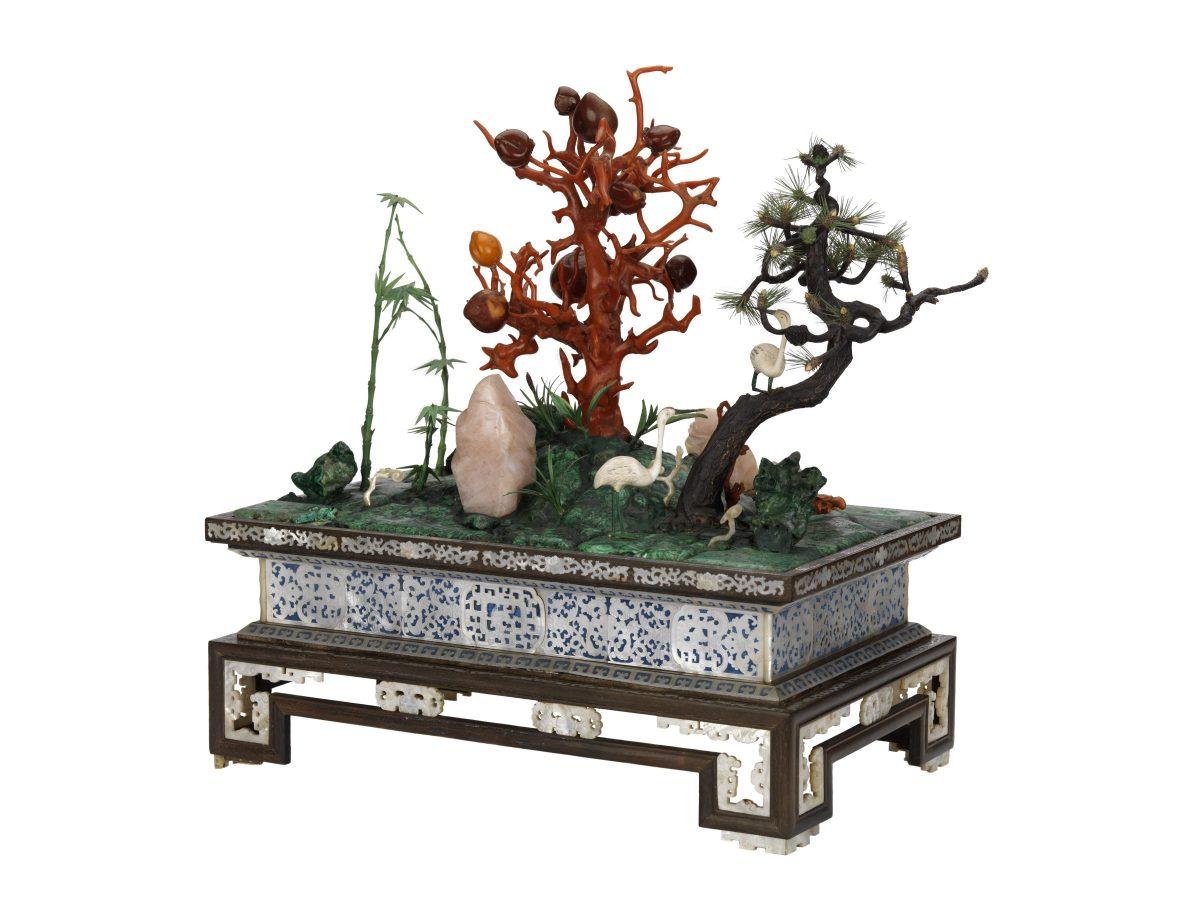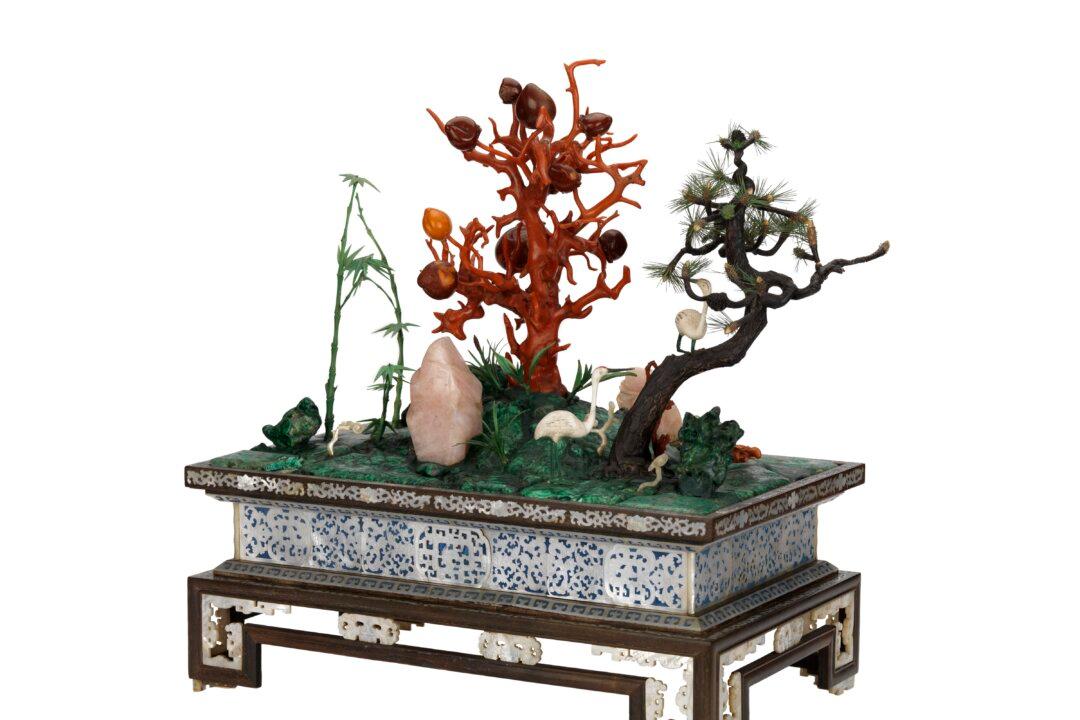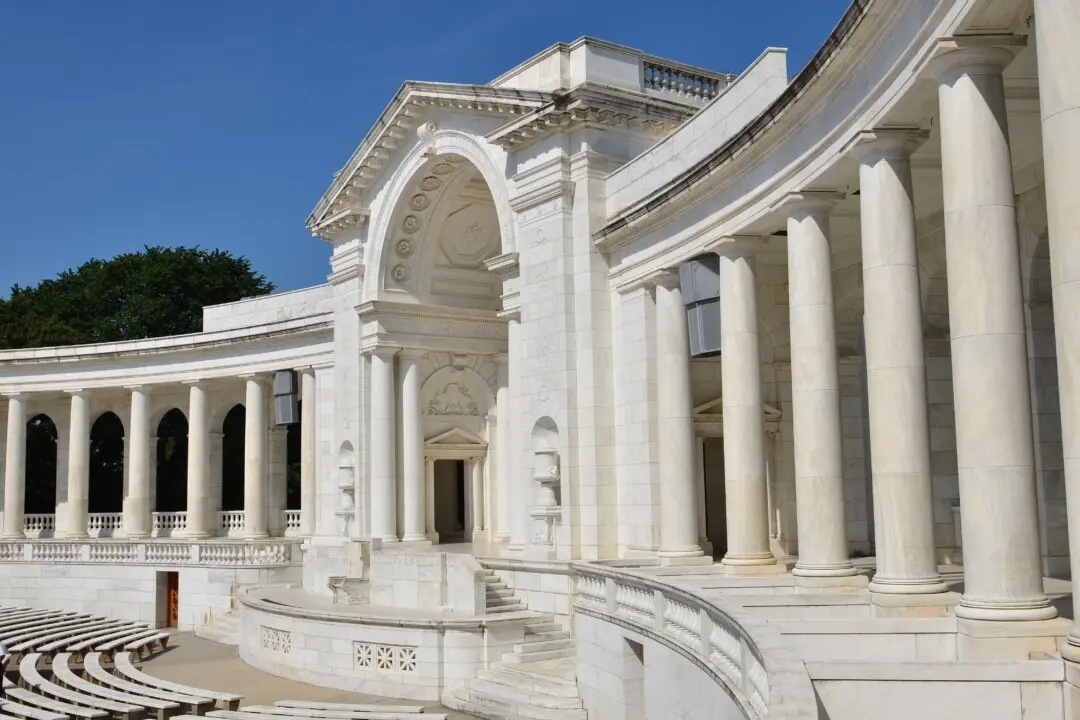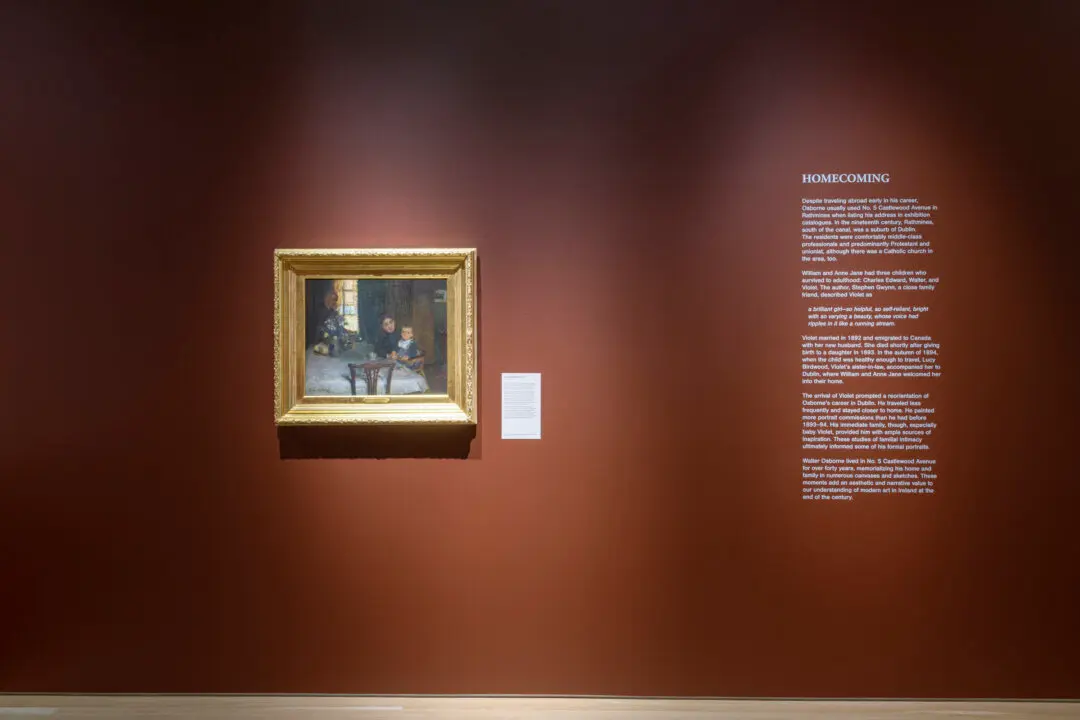Dr. Robert Blyth, senior curator of world and maritime history at the National Maritime Museum in London, shares about a late 18th-century miniature Chinese garden:

The Chinese miniature garden shows the "Three Friends of Winter": a plum tree in coral, a pine tree in wood and ivory, and a bamboo in tinted ivory. All three endure the cold weather and together symbolize perseverance, integrity, and longevity. National Maritime Museum, London






